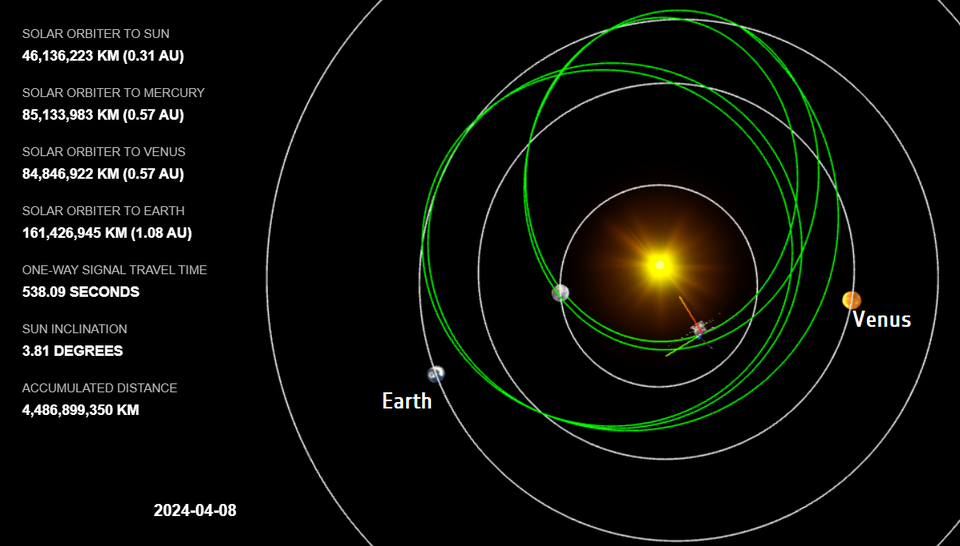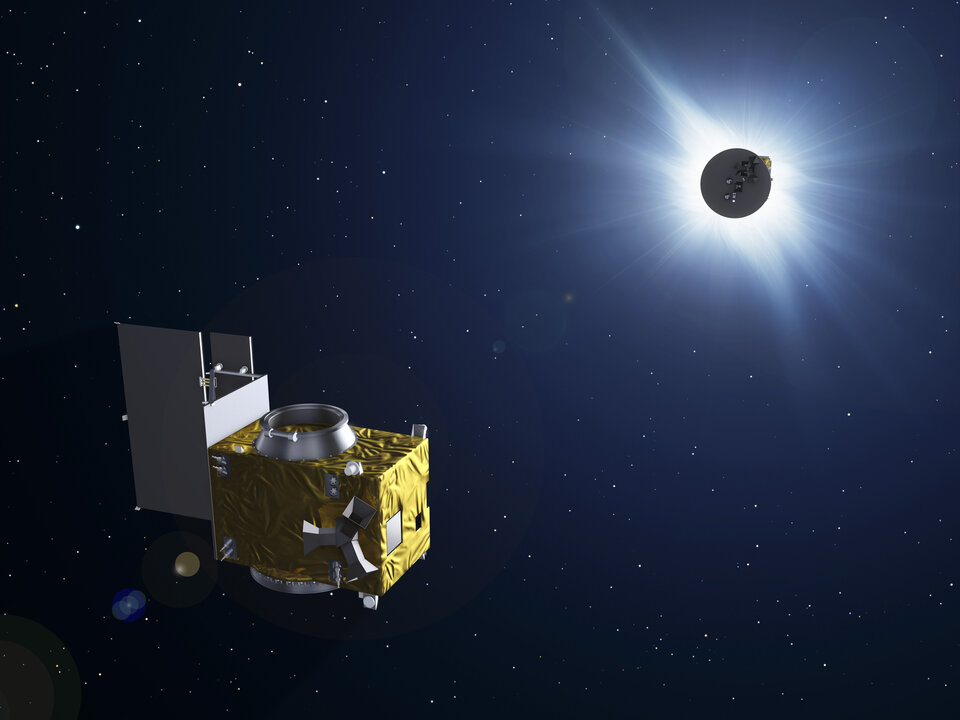On 8 April 2024, a large part of the United States and Mexico will experience a total solar eclipse, with viewers getting the rare chance to see the Sun’s stunning outer atmosphere from ground. Also at the STCE in Belgium, all eyes will be on the Sun. Three satellite instrument teams are preparing for unique, yet complementary, observations of this great eclipse.
Solar Orbiter and PROBA-2 have a front-row seat
On the day of the eclipse, Solar Orbiter will be in a great location. 4 April 2024 marked the spacecraft’s closest approach to the Sun in its egg-shaped orbit. These closest approaches happen roughly every six months. During the days before and after, all ten of the spacecraft’s scientific instruments are on high alert.
What’s more, Solar Orbiter will be observing the Sun side-on compared to our perspective on Earth. This means that the structures in the corona (the Sun’s outer atmosphere) that we see at the right-hand side of the Sun from Earth will be seen directly face-on by the Solar Orbiter spacecraft.
PROBA-2, which is orbiting Earth at a fast pace, will provide observations of the eclipse from the Earth’s perspective. Due to this fast orbit, the spacecraft will pass through the shadow of the Moon twice and the LYRA and SWAP instrument onboard will register two partial eclipses.Together with the data from the Solar Orbiter instruments, these observations will form a unique dataset observing aan eclipse from complementary viewpoints.

Position of Solar Orbiter on 8 April 2024, with Solar Orbiter’s turns around the Sun shown in green
Proba-3 as the ultimate eclipse chaser
An eclipse is a rare opportunity to see the solar corona, which though super-hot, is also very faint, and is therefore usually drowned out by the Sun’s blindingly bright surface. The corona is fascinating for so many reasons, including because it is thought to be the origin of the solar wind.
To study the corona, scientists create their own artificial eclipse. The Metis instrument on board Solar Orbiter is an example of a coronagraph, a specialised instrument designed to block out the light of the Sun. The bigger the distance between the light-blocking disc and the camera photographing the corona, the less light spilt around the coronagraph and the better our view.
ESA’s upcoming Proba-3 mission will be the ultimate coronagraph in space; two separate spacecraft will work together, one blocking the sunlight and the other observing the corona from 144 m away. This precision-flying experiment will let us observe closer to the solar rim than ever before.

Proba-3 set up in space
Proba-3’s main goal is to test new technologies and techniques. But if it works, we can expect exciting discoveries about the Sun, which would complement the views from Solar Orbiter and PROBA-2.
Proba-3 is due to launch later in 2024. To test out some of the science instruments the spacecraft will carry, a team of Proba-3 scientists and engineers are heading to Mexico during the total solar eclipse. There, they will try out the instruments on the real solar eclipse to ensure that they work in tip top condition in space. PROBA-2 will support this effort with SWAP mosaic observations taken close before the eclipse, to give the observers on ground an idea of what the extended corona will look like during the event.
More detail here: https://www.esa.int/Science_Exploration/Space_Science/Solar_Orbiter/Sola...
More on PROBA-2 eclipse observations: https://proba2.sidc.be/Eclipse2024April8





